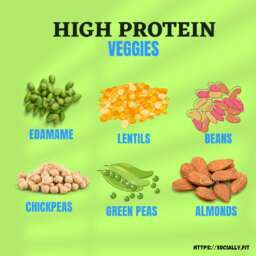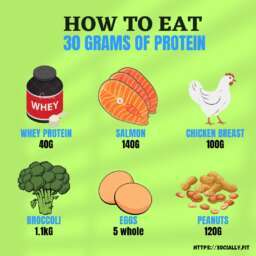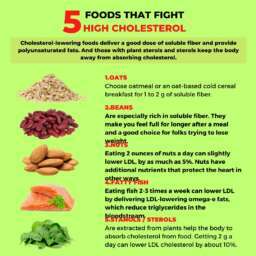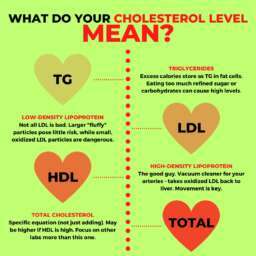Is Pulled Pork Healthy? Exploring Nutritional Benefits and Concerns. Discover whether pulled pork is a healthy choice for your diet. Dive into its nutritional breakdown, health benefits, and tips for making it healthier. Learn how to enjoy this delicious dish without compromising your wellness!
Introduction: Is Pulled Pork Healthy?
Ah, pulled pork! This mouthwatering dish has won hearts and appetites across the globe. But when it comes to our health, you might be wondering: Is pulled pork healthy? Let’s dive into the details and separate fact from fiction, exploring its nutritional profile, health benefits, and potential concerns.
Is Pulled Pork Healthy
What is Pulled Pork?

History of Pulled Pork
Pulled pork traces its roots back to the Southern United States, where barbecue traditions flourished. Traditionally made from pork shoulder, this dish has become a staple in many homes and restaurants. Over the years, it has adapted, incorporating various regional spices and sauces, making it a versatile favorite.
Different Cooking Methods
You can prepare pulled pork using various methods, including:
- Slow Cooking: Ideal for breaking down the tough fibers in pork shoulder.
- Smoking: Adds a rich flavor while maintaining moisture.
- Oven Roasting: A quicker alternative that still yields tender meat.
Each method brings out unique flavors and textures, making pulled pork a culinary delight.
Is Pulled Pork Healthy
Nutritional Breakdown of Pulled Pork

- Calories: Pulled pork contains approximately 250 calories per 100 grams. This calorie count can vary based on the cut of pork used and cooking methods. It’s essential to be mindful of portion sizes, especially if you’re watching your caloric intake.
- Protein: With about 25 grams of protein per 100 grams, pulled pork is an excellent source of protein. Protein is crucial for muscle repair, immune function, and overall body maintenance, making it a popular choice for those looking to increase their protein intake.
- Fat Content: Pulled pork typically contains around 15 grams of fat per 100 grams, with a significant portion being saturated fat. While some fat is necessary for hormone production and nutrient absorption, consuming it in moderation is crucial for heart health.
- Carbohydrates: Pulled pork is virtually carbohydrate-free, making it a great option for low-carb diets. The absence of carbs means that it won’t spike blood sugar levels, which can be beneficial for individuals managing diabetes.
- Vitamins: Pulled pork is a good source of several B vitamins, particularly B6 and B12. These vitamins are essential for energy metabolism and brain function, playing a role in red blood cell production and the maintenance of nerve cells.
- Minerals: Pulled pork provides essential minerals like iron, zinc, and selenium. Iron is vital for oxygen transport in the blood, zinc supports immune function, and selenium acts as an antioxidant, helping to combat oxidative stress in the body.
- Sodium: Depending on preparation and seasoning, pulled pork can contain high sodium levels, averaging around 600 mg per 100 grams. High sodium intake can lead to increased blood pressure and other cardiovascular issues, so monitoring is necessary.
- Cholesterol: Pulled pork contains about 70 mg of cholesterol per 100 grams. While dietary cholesterol doesn’t impact blood cholesterol levels as significantly as once thought, it’s still important for those with cholesterol concerns to monitor intake.
- Fatty Acids: Pulled pork contains both saturated and unsaturated fatty acids. While unsaturated fats are heart-healthy, excessive saturated fat consumption can increase cholesterol levels, contributing to heart disease risk.
- Fiber: Pulled pork contains no dietary fiber, as it is an animal product. Incorporating fiber-rich foods into meals alongside pulled pork is essential for digestive health and maintaining a feeling of fullness.
Is Pulled Pork Healthy
Health Benefits of Pulled Pork

- High-Quality Protein Source: Pulled pork provides a substantial amount of protein, supporting muscle growth, repair, and overall body function. Including protein in your diet helps keep you full longer, reducing the temptation to snack on unhealthy foods.
- Rich in B Vitamins: The B vitamins found in pulled pork help convert food into energy. They also play a role in brain health and red blood cell formation, contributing to overall vitality.
- Iron-Rich: The iron content in pulled pork aids in oxygen transportation throughout the body, preventing fatigue and promoting energy levels. It’s particularly beneficial for individuals with higher iron needs, like athletes and pregnant women.
- Zinc Support: Zinc, present in pulled pork, is vital for immune function, wound healing, and DNA synthesis. Adequate zinc intake helps maintain a robust immune response, particularly during cold and flu seasons.
- Selenium Antioxidant: Selenium is an essential mineral found in pulled pork that acts as an antioxidant. It helps protect cells from damage caused by free radicals, potentially reducing the risk of chronic diseases.
- Low-Carb Option: With virtually no carbohydrates, pulled pork is a suitable choice for low-carb and ketogenic diets, which can help with weight management and blood sugar control.
- Versatile Cooking: Pulled pork can be prepared in various ways, allowing for diverse meal options. It can be served on sandwiches, in tacos, or alongside vegetables, making it easy to include in a balanced diet.
- Satiating: The combination of protein and fat in pulled pork can help you feel full and satisfied after meals. This satiety can prevent overeating and assist with weight management.
- Flavorful and Enjoyable: The rich flavor of pulled pork makes it a favorite among many, encouraging people to enjoy their meals. A satisfying eating experience can promote better adherence to healthy eating patterns.
- Supports Healthy Eating Patterns: When balanced with plenty of vegetables and whole grains, pulled pork can fit into a well-rounded diet, promoting overall health and well-being.
Is Pulled Pork Healthy
Potential Health Concerns

- High Sodium Content: Many recipes for pulled pork involve salt or other sodium-rich seasonings, which can contribute to high blood pressure and other cardiovascular issues if consumed in excess.
- Saturated Fat Levels: Depending on the cut of pork used, pulled pork can be high in saturated fat, which may raise cholesterol levels and increase the risk of heart disease if consumed excessively.
- Processed Versions: Store-bought or pre-packaged pulled pork often contains preservatives, added sugars, and unhealthy fats, which can detract from its health benefits.
- Caloric Density: Pulled pork is relatively calorie-dense, which can contribute to weight gain if portion sizes are not controlled, especially when paired with high-calorie sauces and sides.
- Lack of Fiber: Being an animal product, pulled pork contains no dietary fiber. A lack of fiber can negatively impact digestive health and overall satiety, leading to overeating.
- Potential for Carcinogens: Cooking pork at high temperatures, such as grilling or frying, can create harmful compounds that may increase the risk of cancer, especially when charred.
- Heart Disease Risk: Regular consumption of high-fat, high-sodium meats can contribute to heart disease, making it important to balance pulled pork with healthier options.
- Allergy Potential: While rare, some individuals may have allergies to certain cuts of pork or the spices used in preparation, leading to allergic reactions.
- Food Safety Concerns: Improper cooking or handling of pulled pork can lead to foodborne illnesses. Ensuring thorough cooking and safe food handling practices is crucial.
- Weight Management Issues: Consuming pulled pork frequently without balancing it with other nutritious foods can lead to weight gain and related health problems if not monitored.
Is Pulled Pork Healthy
How to Make Pulled Pork Healthier

To make pulled pork healthier, consider the following strategies:
- Choose Lean Cuts: Opt for leaner cuts of pork, such as pork tenderloin or loin, which have lower fat content compared to traditional shoulder cuts. This reduces overall saturated fat and calorie intake.
- Limit Added Sugars: Avoid sugary sauces and marinades. Instead, use natural flavor enhancers like herbs, spices, vinegar, or citrus juices to keep the flavor without the extra calories and sugars.
- Control Portion Sizes: Be mindful of serving sizes. Pair smaller portions of pulled pork with larger servings of vegetables, grains, or salads to create a balanced meal.
- Cook with Healthy Methods: Use healthier cooking methods like slow cooking or baking instead of frying. This helps retain moisture without adding unnecessary fats.
- Make Homemade Sauces: If you enjoy BBQ sauce, consider making your own to control the ingredients and reduce sugar and sodium content.
- Increase Vegetable Intake: Serve pulled pork with plenty of vegetables, whether in a salad, as a side, or in a wrap. This increases fiber intake and adds essential nutrients.
- Limit High-Calorie Sides: Instead of heavy sides like potato salad or macaroni and cheese, opt for lighter options such as coleslaw made with vinegar or grilled veggies.
- Monitor Sodium Levels: Be cautious of added salt during cooking. Use salt substitutes or herbs to enhance flavor without increasing sodium.
- Balance with Other Proteins: Mix pulled pork with plant-based proteins like beans or lentils in dishes, adding nutritional diversity and fiber while reducing meat consumption.
- Stay Hydrated: Ensure adequate water intake to support digestion and overall health, especially if consuming higher sodium foods.
Is Pulled Pork Healthy
Nutritional Value Comparison: Pulled Pork vs. Other Common Meats
| Meat Type | Calories (per 100g) | Protein (g) | Fat (g) | Carbohydrates (g) | Key Nutrients | Summary Description |
|---|---|---|---|---|---|---|
| Pulled Pork | 250 | 25 | 15 | 0 | B vitamins, Zinc, Selenium | Rich in protein but higher in fat compared to chicken. |
| Chicken Breast | 165 | 31 | 3.6 | 0 | Niacin, Vitamin B6 | Lower in calories and fat, high in lean protein. |
| Beef (Ground) | 250 | 26 | 20 | 0 | Iron, Zinc | Similar calories, but higher in fat; good iron source. |
| Turkey | 135 | 30 | 1.5 | 0 | Selenium, Niacin | Low in fat and calories, high protein option. |
| Lamb | 294 | 25 | 21 | 0 | Iron, Vitamin B12 | High in fat and calories, but nutrient-rich. |
| Pork Tenderloin | 143 | 26 | 3.5 | 0 | Thiamine, Selenium | Leaner cut than pulled pork, lower in fat. |
| Tofu | 76 | 8 | 4.8 | 1.9 | Calcium, Iron | Low in calories, plant-based protein with healthy fats. |
| Salmon | 206 | 22 | 13 | 0 | Omega-3 fatty acids, Vitamin D | Heart-healthy fats, lower in saturated fat than pork. |
| Duck | 337 | 19 | 28 | 0 | Iron, B vitamins | Higher in fat; rich flavor but not as lean. |
| Venison | 158 | 30 | 3.5 | 0 | Iron, Zinc | Leaner option, low in fat and calories, nutrient-dense. |
Analysis:
- Pulled pork offers a substantial protein content but is higher in calories and fat compared to leaner meats like chicken and turkey.
- For lower fat options, consider chicken breast or turkey.
- If looking for nutrient density, beef and lamb provide essential vitamins, but watch out for fat content.
Is Pulled Pork Healthy
Homemade vs. Store-Bought Pulled Pork Health Benefits
| Aspect | Homemade Pulled Pork | Store-Bought Pulled Pork | Summary Description |
|---|---|---|---|
| Ingredients | Fresh, whole ingredients | May contain preservatives and additives | Homemade is often cleaner and healthier. |
| Control Over Seasoning | Total control over salt and spices | Often high in sodium and sugar | Homemade can be tailored to dietary needs. |
| Fat Content | Can choose lean cuts | Generally higher fat due to various cuts used | Homemade can be healthier by using lean cuts. |
| Nutritional Information | Can track calories and macros | Often lacks clear labeling | Homemade allows for better nutritional transparency. |
| Cooking Method | Healthier methods like slow cooking | May use unhealthy fats in preparation | Cooking method impacts overall healthiness. |
| Portion Control | Easier to control serving sizes | Pre-packaged portions may be larger | Homemade allows for better portion management. |
| Flavoring | Natural herbs and spices | Often contains artificial flavor enhancers | Homemade flavors are generally healthier. |
| Freshness | Made fresh with no preservatives | May have a longer shelf-life but less fresh | Fresh ingredients improve overall health. |
| Cost | Can be more economical over time | May be pricier due to convenience | Homemade can save money in the long run. |
| Allergens | Easy to avoid allergens | Potentially contains hidden allergens | Homemade allows for complete control over allergens. |
Analysis:
- Homemade pulled pork allows for greater control over ingredients, seasonings, and cooking methods, often resulting in a healthier dish.
- Store-bought options can be convenient but are usually higher in sodium and additives.
- Preparing pulled pork at home can also be more economical and customizable.
Is Pulled Pork Healthy
Sodium Content Comparison: Pulled Pork vs. Processed Meats
| Meat Type | Sodium Content (mg per 100g) | Summary Description |
|---|---|---|
| Pulled Pork | 600 | Sodium varies widely based on preparation methods. |
| Hot Dogs | 1,200 | Generally very high in sodium due to curing. |
| Bacon | 1,500 | Extremely high sodium, often linked to heart issues. |
| Deli Meats | 1,000 | Typically high in sodium due to preservation methods. |
| Salami | 1,200 | High sodium content, often processed with nitrates. |
| Processed Ham | 1,200 | Similar to deli meats in sodium content. |
| Canned Meats | 800-1,200 | High sodium levels for preservation. |
| Smoked Sausage | 1,000-1,400 | Contains added sodium from smoking and preservation. |
| Pepperoni | 1,300 | High sodium, used in pizzas and snacks. |
| Jerky | 1,500-2,000 | Very high sodium content due to drying process. |
Analysis:
- Pulled pork typically has a moderate sodium level compared to processed meats, which often exceed recommended daily intake levels.
- Monitoring sodium intake is crucial, particularly for those with health concerns, making homemade pulled pork a better option to control sodium levels.
- Be mindful of the sodium in processed meats, especially in snacks and ready-to-eat meals.
Is Pulled Pork Healthy
Health Implications: Pulled Pork vs. Vegetarian Protein Sources
| Protein Source | Calories (per 100g) | Protein (g) | Fiber (g) | Key Nutrients | Summary Description |
|---|---|---|---|---|---|
| Pulled Pork | 250 | 25 | 0 | B vitamins, Zinc, Selenium | High protein but low in fiber. |
| Lentils | 116 | 9 | 8 | Folate, Iron, Magnesium | Excellent plant-based protein, high in fiber. |
| Chickpeas | 164 | 9 | 7.6 | Iron, Folate, Manganese | Nutritious, versatile, and high in fiber. |
| Quinoa | 120 | 4 | 2.8 | Magnesium, Phosphorus | Complete protein source with fiber. |
| Tofu | 76 | 8 | 1.9 | Calcium, Iron | Low-calorie, plant-based protein; low in saturated fat. |
| Black Beans | 132 | 9 | 8.7 | Folate, Magnesium | Nutrient-rich, high in fiber. |
| Edamame | 121 | 11 | 5.2 | Vitamin K, Folate | Complete protein, high in fiber and low in calories. |
| Peas | 81 | 5 | 5.7 | Vitamin A, C, K | Low-calorie, good protein source with fiber. |
| Almonds | 576 | 21 | 12.5 | Vitamin E, Magnesium | High in healthy fats, fiber, and protein, though calorie-dense. |
| Seitan | 120 | 25 | 0 | Iron, Selenium | High-protein meat alternative, but low in fiber. |
Analysis:
- While pulled pork provides a high amount of protein, it lacks dietary fiber, which is essential for digestive health.
- Vegetarian sources like lentils and chickpeas are nutrient-dense, rich in fiber, and can contribute to heart health.
- Balancing pulled pork with high-fiber foods can create a more wholesome meal.
Is Pulled Pork Healthy
Cooking Methods Impact: Pulled Pork vs. Other Meats
| Cooking Method | Pulled Pork Impact | Comparison with Other Meats | Summary Description |
|---|---|---|---|
| Slow Cooking | Retains moisture, tender | Similar benefits for chicken and beef | Slow cooking enhances flavor without adding fat. |
| Smoking | Adds flavor, can be healthier | Common for beef brisket | Smoking can enhance flavor but may require added fats. |
| Roasting | Can dry out if overcooked | Effective for chicken, pork loin | Roasting can lead to drier meat; watch cooking times. |
| Grilling | Can char and add carcinogens | Common for chicken and beef | Grilling can impart flavor but may lead to unhealthy compounds. |
| Frying | Increases fat content | Typically increases fat for all meats | Frying is less healthy due to added fats and calories. |
| Sous Vide | Maintains moisture and flavor | Great for beef and chicken | Precise temperature control yields juicy results. |
| Pressure Cooking | Tenderizes quickly | Effective for tough cuts of meat | Fast cooking retains moisture but may alter texture. |
| Stewing | Can be nutritious if balanced | Good for chicken, beef, and vegetables | Stewing with veggies can enhance healthiness. |
| Broiling | Can be fatty | Similar impact for other meats | High heat can produce crispy skin but may add fat. |
| Baking | Retains flavor and moisture | Good method for many proteins | Baking is generally healthy but requires careful seasoning. |
Analysis:
- Different cooking methods significantly affect the healthiness of pulled pork and other meats.
- Slow cooking and stewing often yield moist, flavorful results without excess fat.
- Avoid frying to reduce calorie intake and consider healthier alternatives like grilling or roasting with minimal added fats.
Is Pulled Pork Healthy
Conclusion: Is Pulled Pork Healthy?

In summary, pulled pork can be a delicious and protein-rich addition to your diet, offering several health benefits such as providing essential nutrients like B vitamins, iron, and zinc. However, it’s crucial to be mindful of the potential health concerns associated with high sodium and saturated fat content, particularly when opting for processed versions. By selecting leaner cuts, controlling portion sizes, and pairing pulled pork with a variety of nutrient-dense vegetables, you can enjoy this savory dish while maintaining a balanced and health-conscious lifestyle.
Ultimately, moderation and mindful preparation are key to reaping the benefits of pulled pork without compromising your health. With thoughtful adjustments to your recipes and serving sizes, you can enjoy this flavorful dish as part of a wholesome and satisfying meal plan. Whether served on its own, in sandwiches, or with vibrant sides, pulled pork can fit seamlessly into a nutritious diet that supports your health goals.
Is Pulled Pork Healthy
FAQs: Is Pulled Pork Healthy?
Q1: Can pulled pork be part of a weight-loss diet?
Yes, in moderation and when prepared healthily, pulled pork can fit into a weight-loss diet, especially due to its high protein content.
Q2: How can I reduce the fat content in pulled pork?
Choose lean cuts and trim any visible fat before cooking.
Q3: Is pulled pork gluten-free?
Typically, pulled pork is gluten-free, but always check the sauces and seasonings used.
Q4: How should I store leftover pulled pork?
Store it in an airtight container in the refrigerator for up to three days or freeze it for longer storage.
Q5: What are healthier sauce alternatives for pulled pork?
Opt for homemade sauces using natural ingredients like vinegar, mustard, and spices to avoid preservatives and added sugars.
Click here to know more about weight loss. Subscribe to Workout with Hunar for weight loss and workout videos.















One thought on “Is Pulled Pork Healthy?”